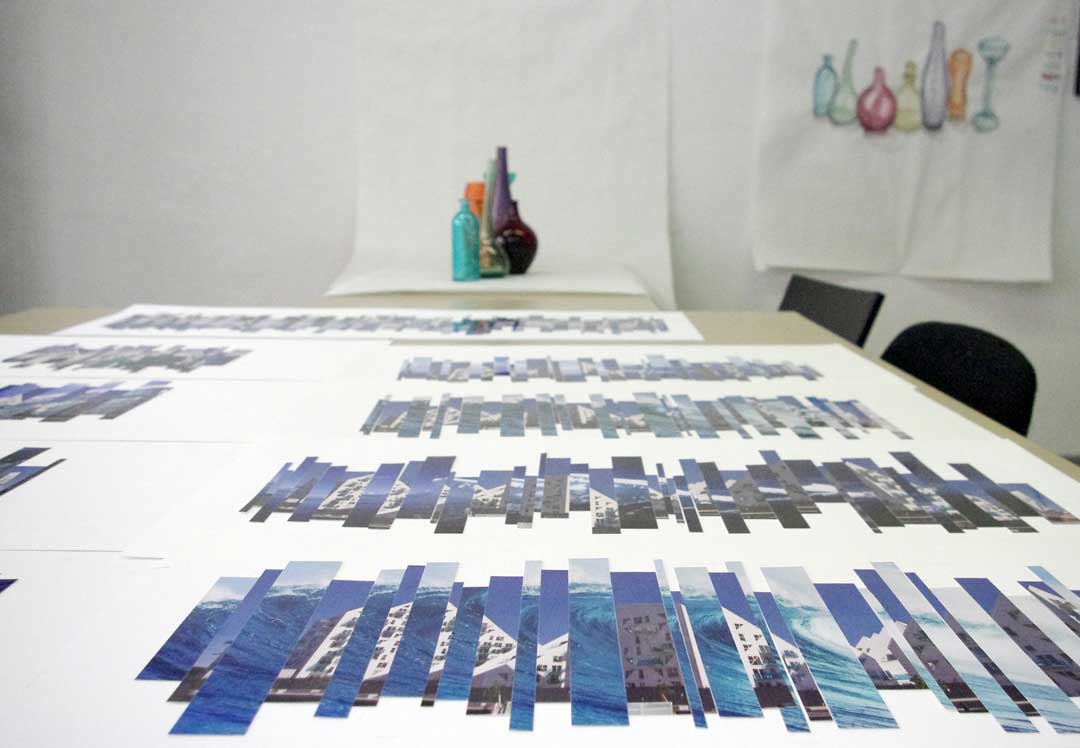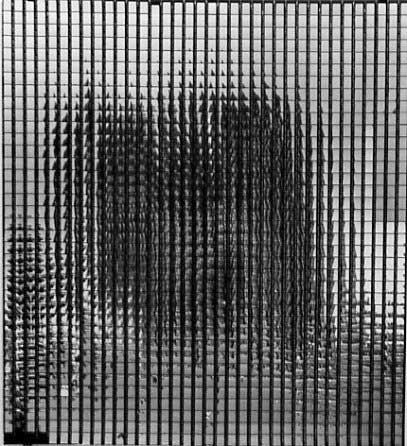The working process towards a product
The first question is how do I, as an artist, produce good artworks with demand? For me, it's not about the brilliant thought or an "aha" moment, but about the result of a working process. This process starts with having a thought and you keep developing it throughout the process. I photograph my projects alone or with an assistant, but with some elaborate collages a whole team sometimes works together. For example, there was once a project where 64,000 snippets had to be cut and glued, there we worked with 4 people. The work process otherwise consists of a team of outsourced employees, scans, prints, framers and films developed in the lab until the final product is finished. In this process many steps are outsourced, as it would be too much work and too expensive for me alone. It is simply not possible to be a master in every part of the work, but then there are the corresponding contributors. The framework conditions and the infrastructure also play a role, of course. Suppliers, for example, are an elementary part of the process. I think that in the process of working one should stay with oneself and not listen to others, advice and tips should of course be taken but one should not let oneself be swayed.

Kellner's motivation and advice to aspiring artists
My motivation to get involved with cubism or deconstrivism started with the destroyed image and looking at something from different angles. This interest was influenced by personal breaks in my life, where things break or where deep cuts have taken place. I believe that only artists, not photographers, can enrich photography and the image. As I mentioned earlier, I think that artistically it is important to stay true to yourself and to let your own experiences and interests flow into it. I advise all young artists to go their own way, it's not about diving into a zeitgeisty mainstream, but about producing something original and new. As far as the mainstream is concerned, however, I must add that this is only partly shaped by artists themselves, but in particular by curators, most of whom are much older and thus do not correspond to the current zeitgeist. My artistic interest lies particularly in parallel contemporary events. In my early days, I first worked with a pinhole camera, with which it was possible for me to expose several photographs onto one negative. As an artist, you need a certain willingness to take risks when you do something new that you yourself and the audience don't know; for me, this newness is currently the chapel schools. Genius loci was not as successful as I had hoped, but at least the project is in the black. You generally need more attention for the individual projects, they go by almost too fast. In comparison, you have to imagine that painters used to work on a painting for a few years and the profit from that painting had to be enough for the next few years. Some of my ideas have been maturing in my sketchbook for 30 years, there are always new technical possibilities for these ideas and also new ideas on my part, which is why the imaginary plans are always being spontaneously overturned. One example is the g20 project, which was supposed to be finished in 2020, but Corona got in the way and since no travelling was possible, I couldn't photograph anything either. In fact, the project was originally supposed to be called g8 and finished in 2008, but the process is still going on today. The products that are created today belong in a contemporary context. That's why the durability is not so relevant, but rather the communication about what you're doing there and the thoughts that go into it.

Creative flow of thoughts
A story about how I come up with my ideas took place in 2015. At the time, I had two teaching assignments in Koblenz and Gießen, which I scheduled for one day. So I drove to Koblenz in the morning, had lunch there and then went on to the university in Gießen. With a day like that, I have to drive a lot and you can get bored quickly, but that also leads to creativity. At the time, I was developing the flucticulus project, and while driving I could let my thoughts run free and just spin them along. In this situation, you can't be distracted because all you see are grey roads, crash barriers or trees. So you can constantly think of something new or sometimes your thoughts take on a life of their own, sometimes you directly think of new products, often you also initiate a work process with these thoughts. Most of the ideas for the flucticulus project came about in such situations in the car, on the plane or in the studio in Denmark. At the moment I'm working on a project, Corona Wellen, but it's still in development and I'm sure it will be reimagined and fuelled with new ideas more often.
Author
Hannah Stöcking, 07.11.2001, Bottrop
Studies: Art History and Literature, Culture, Media
Internship: 2021 at Thomas Kellners Studio
Special Interests: Art, Literature, Music, Festivals & Concerts








